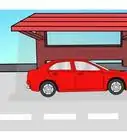wikiHow is a “wiki,” similar to Wikipedia, which means that many of our articles are co-written by multiple authors. To create this article, 71 people, some anonymous, worked to edit and improve it over time.
There are 15 references cited in this article, which can be found at the bottom of the page.
This article has been viewed 516,872 times.
Learn more...
You’ve made the decision to live without a car. Congratulations! While a car is a useful solution to getting from place to place, it can also cost a lot of money to maintain. Cars can also cause a lot of unneeded stress. Without one, you’ll save time and money while getting healthier at the same time. Say goodbye to road rage, gas and traffic, and embrace your new calmer, more peaceful (and more money-filled) life.
Steps
Biking for Success
-
1Choose a bike. There are many different types of bikes to choose. It’s important to pick the one that will best serve your needs. Consider your travelling distance, the terrain, and the grade you’ll be riding when you choose your model.[1]
- Visit a bike show and talk to the employees. Check out what they have to offer. Take the models you like out for a test spin around the block.
- Consider how you’ll be using the bike. If you’re using the bike to go back and forth to work, to the grocery store, and to run other errands on pavement, consider a road bike, which is quick, efficient, and light.
- Determine if a mountain bike is a sound investment. They are durable and can jump easily from pavement to mud and sand. They are built to take a thrashing. They’re just not that great for endurance rides.[2]
- Consider the weight of the bike. It might not seem very heavy going for a spin around the block. It will be much heavier as you pedal it through miles on your way home from work. Buying a lighter frame will make the ride home much more manageable.
-
2Buy a bike. Keep your budget in mind. Classifieds and online sources are a great place to begin. Also, ask a friend if they have a bike they’d be willing to sell.
- Get a bike multi-tool, tire patches, a spare tire, lube, and a flashlight. Keep them in your riding bag in case of emergency.[3]
- Buy a bike lock and use it. Talk to someone at a bike store to find out what will work best for you. Always use multiple locking mechanisms. Although not foolproof, a kryptonite U-lock with a four foot long cable is a good way to prevent bike thieves.
- Get bad weather gear. You’ve gotten rid of your car, so you’ll be exposed to the elements on your rides home. Being prepared means a smooth ride.
- Buying a waterproof bag to keep your equipment in will help you out. Check for used ones online for the best deal.
Advertisement -
3Take care of your bike. Bikes, like cars, need proper maintenance. A small amount of care can make all the difference in your ride.[4]
- Learn how to take care of your bike. Your bike is a series of moving parts. Learn each of these moving parts and what they do. When you expose them to the elements like rain, mud, sand, or snow, the parts will begin to deteriorate. A few simple steps can save you a breakdown in the middle of your commute.
- Do a pre-ride inspection. Like a car, you will benefit from making sure there are no glaring problems to hinder your ride before you begin pedaling. Check the tires, for any loose parts, the chain, and the brakes.[5]
- Clean your bike. Wipe it all over with a dry rag. Take note of any loose parts. Base your cleaning schedule on how often you ride. If you ride every day, wipe your bike down every few.[6]
- Secure any loose bolts. Don’t over tighten them by cranking down on them.
- Apply lube to protect moving parts (the chain, the brake and derailleur levers, the brake and derailleur cables, the brake and derailleur assemblies, and the bearing systems) from the natural wear and tear of riding. It will keep rust and corrosion at bay. Don’t over-lubricate as too much will attract dirt and debris.[7]
-
4Secure your bike. Many bikes are stolen because they are not properly secured. Becoming familiar with how to lock your bike up will help give you some piece of mind as you are going about your day.[8]
- Always use your bike lock. A good lock is your first line of defense against would-be bike thieves.
- Know how to lock your bike. Put your cable through your frame and both wheels. The U-lock goes through the back wheel (inside the rear triangle of the frame). Secure the bike to something solid. This approach locks the rear wheel and the frame.
- The smaller the U-lock the better. It’s easier to carry around and is harder to break.
- Consider the insurance quality bike locks offer. You can fill out a form online after purchase, and in the event someone steals your bike, they will pay your homeowners or renters insurance deductible or they will pay to replace the bike. Research your options. Don’t throw any receipts away (for the bike, the locks, or the tools).
-
5Find a safe place to park your bike. If you can, take it inside with you and find a safe place to store it while you’re away. Make sure to lock it when you are not around, even if it’s just for a short time.
- Use a small U-lock if you lock your bike to a parking meter, never just a cable. A small U-lock makes it impossible to lift the bike over the top.
- Look for immovable bike racks installed outside of buildings. Check to make sure it’s bolted down and solid. Never lock your bike to something flimsy, like a chain-link fence which can be easily snipped open.
- Look for parking garages and parking lots that are bike-friendly. While some ask for a minimal fee, it’s worth the cost for peace of mind.
- Bring your bike inside when you return home if you can. If you can’t, secure your bike with as much precaution as you would when you take it out. Even if you’re tired, taking these extra steps will help insure you have a ride tomorrow.
- Bring any accessories with you after parking your bike: lights, water bottles, seat, etc.
- Take care of yourself, too. A soggy-wet, cold bike ride is miserable. Dress to stay dry. Buy a waterproof vest or jacket with a hood. Rain pants are always a great investment.
Taking the Bus
-
1Find out the bus routes in your city and plan your route. They should be available online. If not, ask the bus driver and he/she should be able to help. Don’t be afraid to ask, especially if you are using multiple transfers.
- Learn how to use a transfer ticket.[9] A transfer will allow the passengers to board a second bus or train going in the same direction to complete their trip. Transfers are generally free (check online or call the transit center for transfer prices) and can be requested at the time of payment. Transfers are generally only available one-way. Also, you may have to wait for the next line when you transfer, so schedule extra time to complete your trip.
- Master the pickup times. Time how long it takes you to walk from home to the station. Subtract that time from the pickup time and you’ll know exactly when you need to leave the house. Give yourself a few minutes on both ends.
- Keep the transit systems number in your phone so you can call to check the times in case of inclement weather or traffic delays. Often transit systems have apps you can download onto your phone that are very helpful. Take advantage of these if you can.
-
2Bring exact change. They don’t always offer change, so this part is up to you. Having it in your hand as you board will make the exchange as pleasant as possible.
- Use an integrated circuit (IC) card if you frequently commute by public transport. While some bus routes allow you to pay using your debit or credit card, others only accept IC cards, tickets, or change. Usually there is an acquisition fee and a security deposit, but you may get discounted rides for using an IC card over cash.
- Consider buying a pass. In many cases, there are discounted bus passes to people. Check out the costs online and do the math to see whether it’s cheaper to buy a month or year-long pass.
-
3Bring your own entertainment. Using transit means you have extra time to yourself. Use this time for something you enjoy!
- Bring a book. Buying cheap paperbacks at the thrift store is economical and fun. You can also invest in a reading pad and download books for free from your local library.
- Bring your own music. Download music through your phone or buy an iPod. Older models are very inexpensive online and can be used just for downloading music. Make sure to keep the volume at a level that won’t bother your surrounding neighbors.
- Listen to a radio program. There are many great apps to download so you won’t miss your favorite radio show now that you don’t have a car. Download them, sit back, and enjoy your time.
-
4Be polite. Use your best manners and treat everyone with courtesy and respect. Good manners are contagious and they can keep bad manners at bay.
- Keep your bag in your lap. Don’t spread your stuff out.
- Don’t eat on the bus. Just don’t. Wait until you get out.[10]
- Offer your seat if someone older or otherwise infirm boards. It’s a polite and respectful thing to do.
- Say thank you to your transit driver. It might be the thing that keeps them waiting an extra ten seconds for you on the day you’re accidentally late.
Riding the Train
-
1Plan for your trip. Don’t wait until the day you need to be somewhere. Taking extra time to familiarize yourself with what to expect will ensure your trip is smooth and stress-free as possible.
- Research the station and its location to you. You may need to take a bus or ride your bike there. Find out how long it will take you to arrive to your destination. Determine the price of your fare and if you’ll need to transfer.
-
2Enter the station and pay the fare. The turnstiles where you buy your ticket will be readily apparent. They accept cash, but cards are generally easier to deal with.
- Many train systems like BART and the Tokyo Metro accept or are switching to using IC cards only.
- Look for the turnstile or gate where you can buy your fare. Never get on a train without paying the fare––getting caught is incredibly expensive and can go on your record.
-
3Consider buying a pass. Passes are oftentimes cheaper than buying a ticket every day.
- Do the math by multiplying each day you use the train by the cost of the ticket. Compare that number to the price of a week or month long pass.
-
4Make your way to the boarding area. If you’re not sure where the boarding area is, look at a map or follow the signs.
- Once you arrive at your platform, wait a safe distance from the tracks. Pay attention to where you are walking and where the train will arrive. Keep your head up and stay alert.
- When the train arrives, allow other passengers to disembark before you get on. Don’t stand in front of the door and expect them to walk around you; stand to the side and give them proper room to leave the train.
-
5Get on board. Get all the way on; don’t let any part of you (including the straps of your bag) dangle outside of the doors.[11]
- Make sure you are on the correct train by listening to the destination and route. If you’re not, get off at the next stop and reevaluate.
-
6Enjoy the ride! Bring a book, download music, or play games on your phone.
- Always be respectful of the people around you by using headphones and keeping your music or radio show to a respectable level.
- Be polite and courteous to your neighbors. Offer older people or otherwise infirm people your seat.
Walking Instead of Driving
-
1Walk. Walking is immeasurably better than driving. It saves you money on gas, parking, and insurance. It’s great for the planet and even better for you. Walking might even be quicker than driving as some people overestimate the time they spend driving.[12]
- Consider moving closer to your work. The money you save by not having a car can help with the possible increase in rent.
-
2Buy comfortable walking shoes. Nothing ruins a walk like a bad blister. Think of how much money you are saving by not driving and treat yourself![13]
- Have your gait analyzed at a running/walking shoe store to determine which shoe is best for you.[14] They will take the time to find the best shoe and the best fit for you.
- Buy a flexible shoe. The shoe must be flexible or you might get shin splints. Twist them to see how much they bend.
- Buy a shoe with cushioning. You’ll be grateful to have it after a few miles after work.
-
3Entertain yourself. There’s no reason to go the same way every day. Change up your route and what you’re doing as you walk.
- Take side streets when you can (never compromise your safety) to see other neighborhoods. Talk to people you see outside. Saying hello is a great way to begin to build community.
- Change up your entertainment. Listening to music, books, or radio shows can make a long walk go by in a snap.
- Use your walk to think about your goals and ambitions. What do you want for yourself? What do you want for your family? What’s going on at work? Exercise clears your head and you’ll see and feel the results in a matter of weeks.
-
4Carry a small bag with essentials you might need. Planning ahead makes small problems a snap to deal with!
- Put moleskin, bandaids, and antiseptic salve in it.
- Carry a small water bottle. Hydration is important!
- Keep a couple bucks of extra cash on you in case you need some water or to make a phone call.
- Keep a spare shirt at work in case of inclement weather.
Community Q&A
-
QuestionWhat can I do if there are no buses in my area?
 Community AnswerCycle, walk, and go to your town meetings to advocate for a transit agency.
Community AnswerCycle, walk, and go to your town meetings to advocate for a transit agency. -
QuestionWhat do I do if I miss the bus?
 Community AnswerCall a parent or friend, contact Uber or a taxi cab company. Or, take a bicycle or wait for the next bus. There are always options provided you've thought about them in advance.
Community AnswerCall a parent or friend, contact Uber or a taxi cab company. Or, take a bicycle or wait for the next bus. There are always options provided you've thought about them in advance. -
QuestionHow do I date without a car?
 Community AnswerIt's romantic to just take her to places you two can walk to, like the park or the beach.
Community AnswerIt's romantic to just take her to places you two can walk to, like the park or the beach.
References
- ↑ https://www.consumerreports.org/cro/bikes/buying-guide/index.htm
- ↑ http://www.active.com/cycling/articles/a-beginner-s-guide-to-buying-a-bike-870028
- ↑ https://www.youtube.com/watch?v=4_nV3Qyn_vE
- ↑ https://totalwomenscycling.com/commuting/commuting-hints-tips/how-to-maintain-and-clean-your-bike-in-10-easy-steps
- ↑ https://www.dummies.com/sports/bicycling/a-pre-ride-bike-inspection-checklist/
- ↑ https://www.cyclingweekly.com/video/how-to-clean-your-bike-221294
- ↑ https://www.youtube.com/watch?v=KnK52tdUn6g
- ↑ https://lifehacker.com/the-proper-way-to-lock-your-bicycle-5942301
- ↑ http://web.mta.info/nyct/bus/howto_bus.htm
- ↑ http://www.seriouseats.com/2008/07/is-it-rude-to-eat-on-mass-public-transit.html
- ↑ https://assistive.amtrak.com/h5/assistive/r/www.amtrak.com/at-the-station/boarding.html
- ↑ http://www.swindonweb.com/?m=862&s=867&ss=0&c=4963&t=save+money+by+walking
- ↑ https://www.health.harvard.edu/pain/8-tips-for-buying-shoes-that-are-good-to-your-feet
- ↑ http://walking.about.com/cs/shoes/bb/shoes.htm
- ↑ http://www.thebus.org/howtoride/How%20to%20Use%20the%20Bike%20Rack.pdf
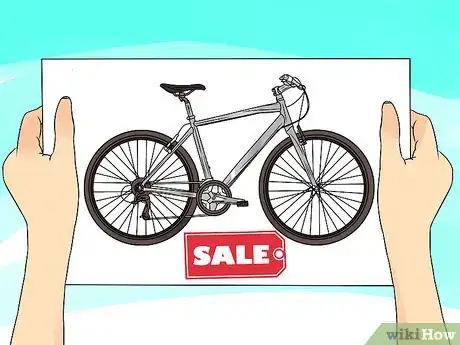
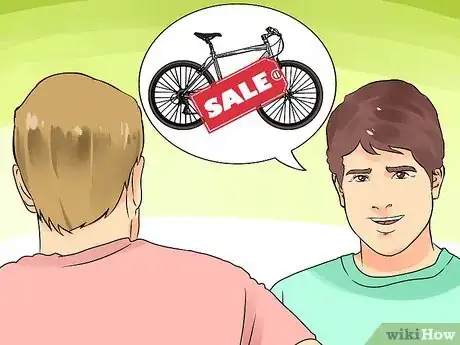
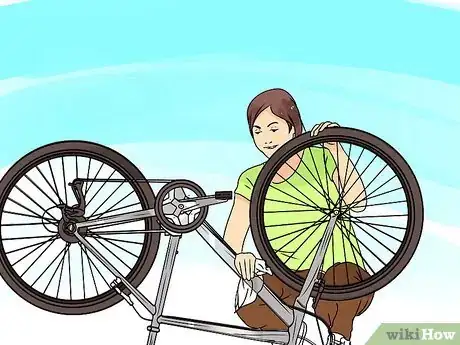
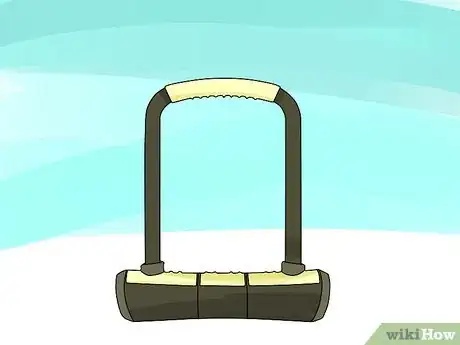

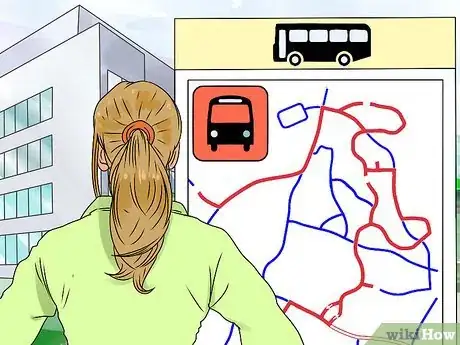
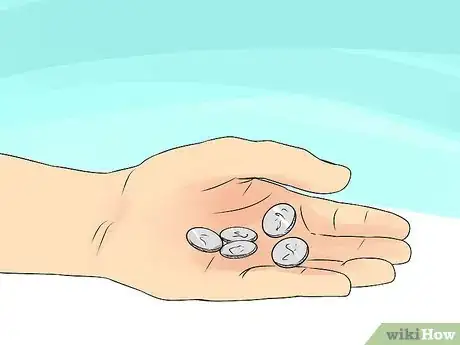
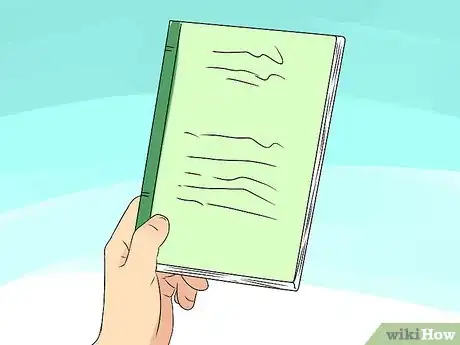
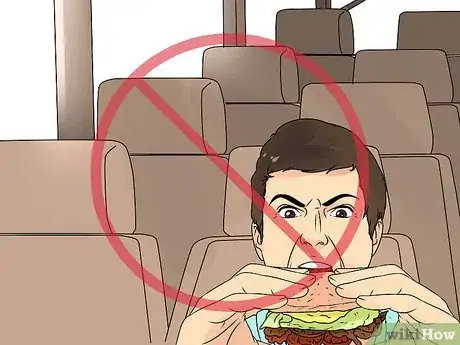
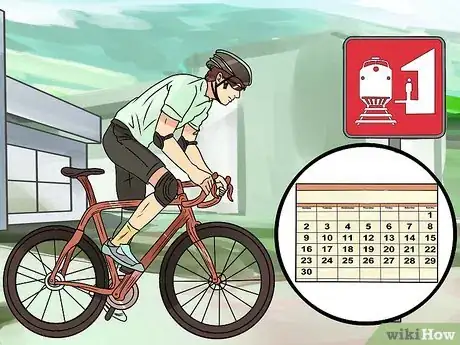

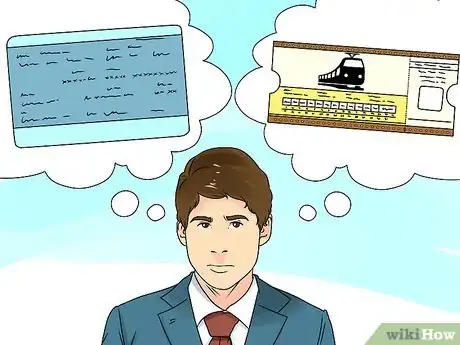

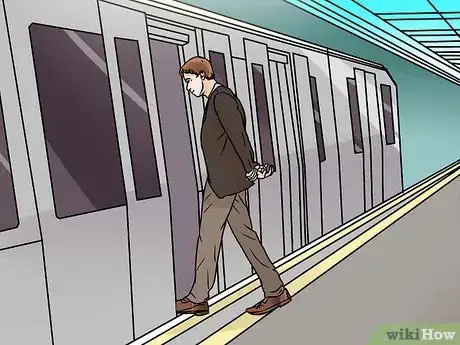

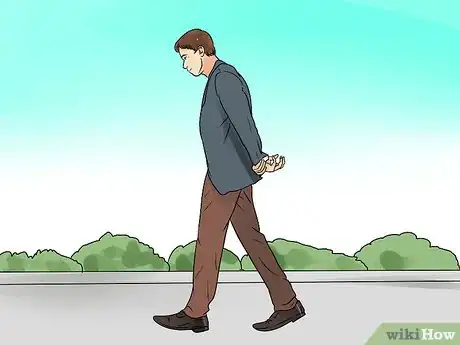
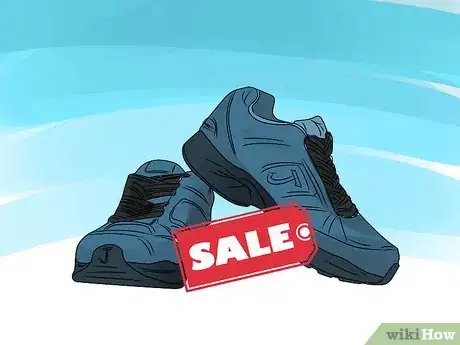
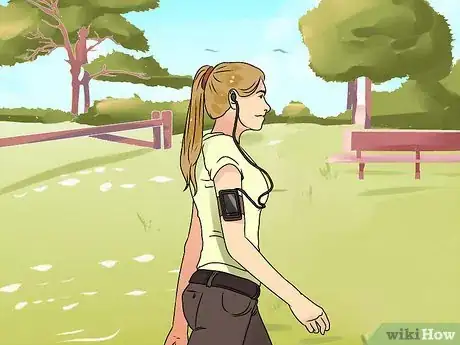
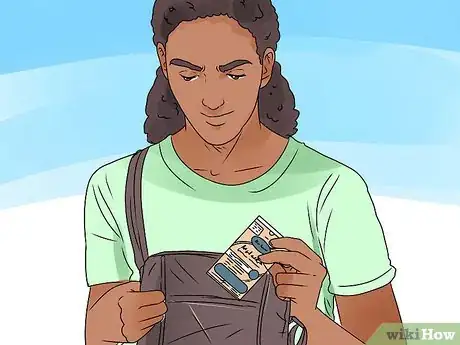


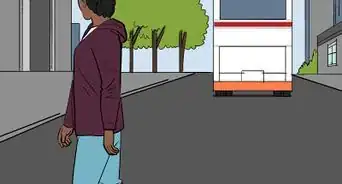



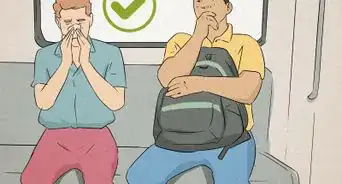
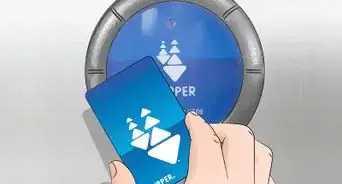

-Step-12.webp)







